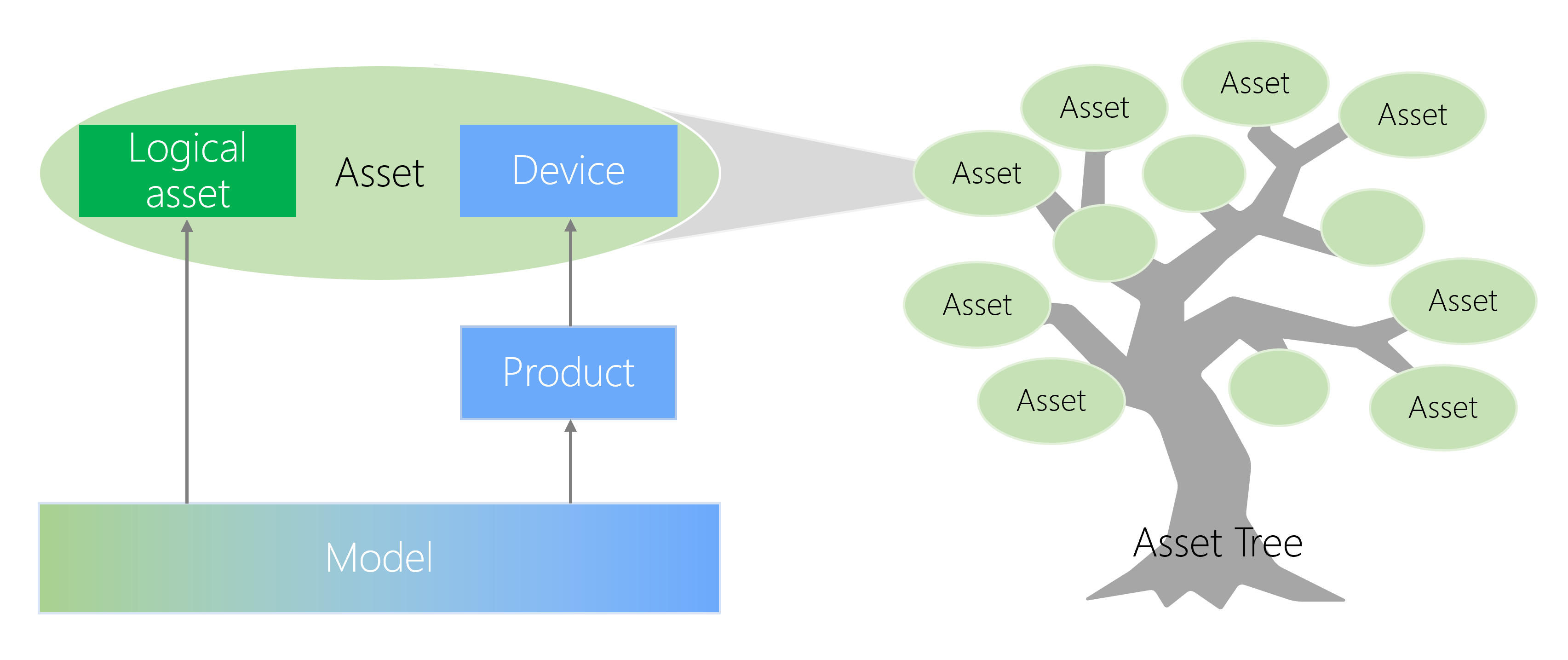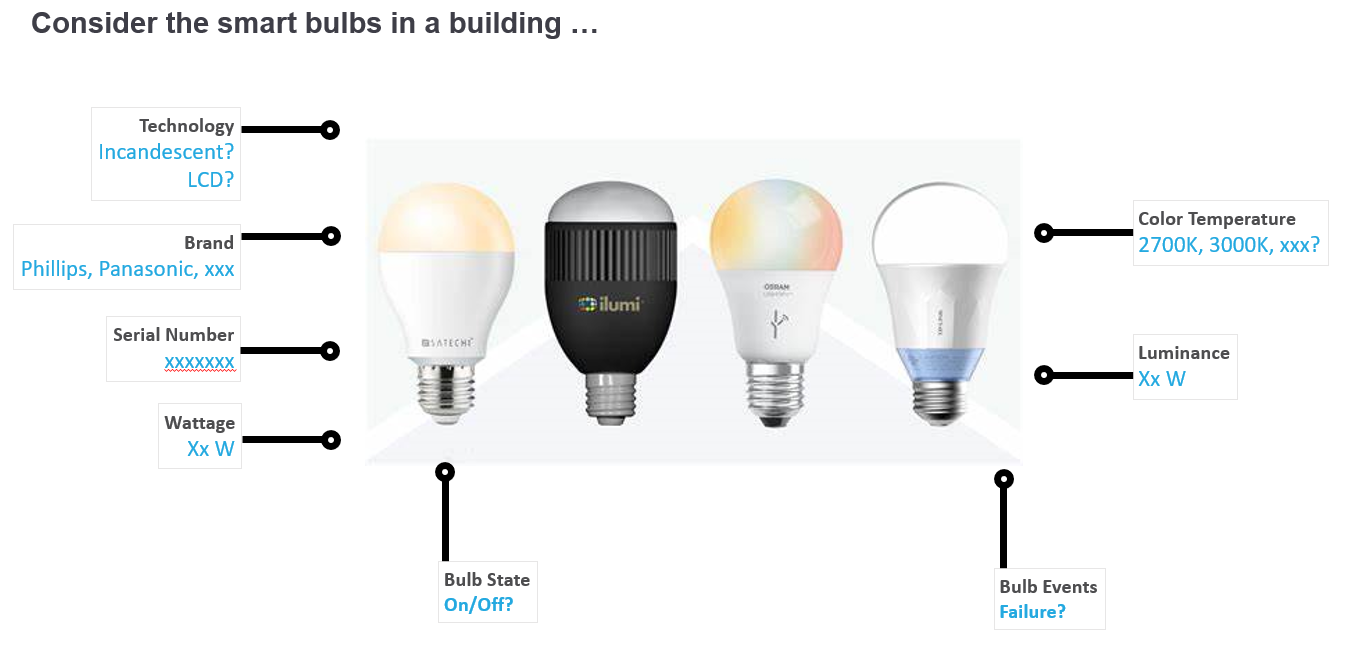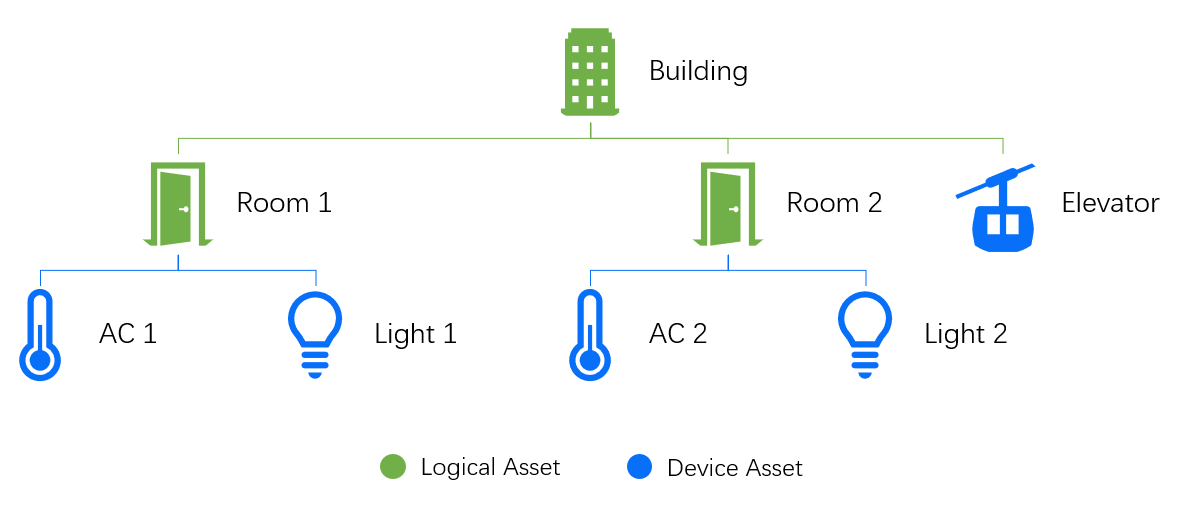Key Concepts¶
Before using EnOS Device Connectivity and Management, you need to learn about the key concepts of models, products, devices, assets, and asset trees.
You can refer to the diagram below to understand the relationships between these concepts:

Model¶
A model is an abstraction of objects connected to IoT platform, encapsulating their characteristics, capabilities, and the services they can provide. Take a smart light bulb as an example: despite differences in specifications, smart bulbs share similar attributes, functional logic, and types of data collected. An abstract model can standardize the characteristics of smart bulbs, allowing application developers to focus on their common features without being overwhelmed by the diversity.

For more information, see Models and Asset Modeling.
Product¶
A product is a collection of devices with the same functionality. Building on a model, a product further defines attributes related to how devices communicate with IoT platform, such as security authentication methods and activation methods.
For example, devices A and devices B may be based on the same model (e.g., a smart thermostat model), but product A might use key-based one-way authentication, while product B might employ certificate-based two-way authentication (e.g., X.509 certificates), thereby meeting different security and use case requirements.
Device¶
A device is an instance of a product. Devices are created based on a product, and each product is based on a model. Therefore, a device not only possesses the functional elements(attributes, measurement points, and commands) defined by the model but also inherits the communication capabilities specified by the product (e.g., device keys, certificates), enabling secure and efficient interaction with the IoT platform.
For more information, see Devices in EnOS.
Asset¶
An asset is an instance of a model, created based on the model. Therefore, an asset inherits the functional elements of the model. Assets can represent either real physical devices or an abstract entity formed by combining multiple physical devices (or their data).
A real physical device, such as an inverter or a personal computer. This type of asset is commonly referred to as a “device”. In EnOS, such assets are called device assets, or simply devices.
A combination of devices, such as a site or station. This type of asset is called a logical asset. Logical assets inherit the functional elements of the model, but their attributes or measurement points are typically not directly collected. Instead, they are generated by computing or logically processing data from associated physical devices. Logical assets do not correspond to a physical device and do not communicate directly with the cloud. As a result, they do not require communication attributes or an associated product. They are primarily used to represent the collective behavior or state of a group of devices.
For example, a building and a room can both be defined as logical assets. They may encompass multiple physical devices (e.g., air conditioners, lights, etc.). The data for the building or room (such as total energy consumption, temperature and humidity distribution, or operational status) is not obtained through direct measurement but is calculated by aggregating the data from all the devices within them.

Asset Tree¶
The asset tree further describes the hierarchical relationships between assets. For example, in the figure above, a building serves as the root node of the tree, with multiple child nodes (such as rooms, elevators, air conditioners, etc.), forming a tree structure. This structure not only reflects physical deployment relationships (e.g., a building containing multiple rooms) but also supports hierarchical data aggregation and analysis (e.g., calculating building-level data from device-level data). The asset tree can also be extended to more complex scenarios, such as “Group-Region-Building-Room-Asset,” enabling multi-level tree-based management.
For more information, see Asset Tree Overview.